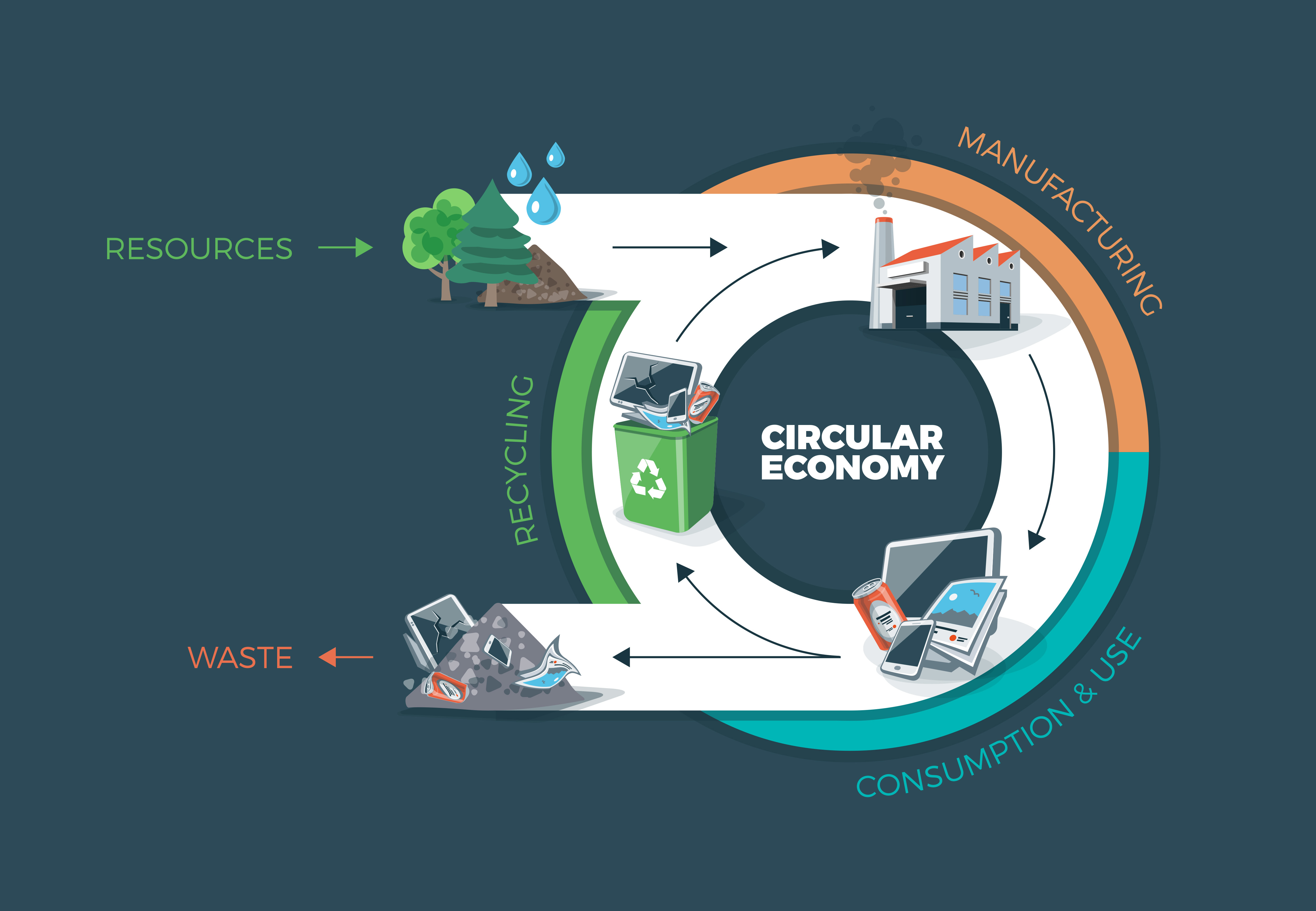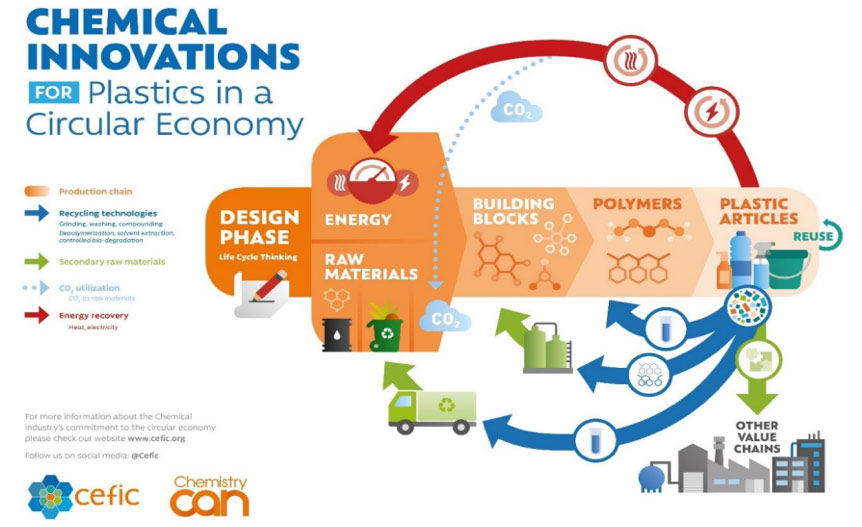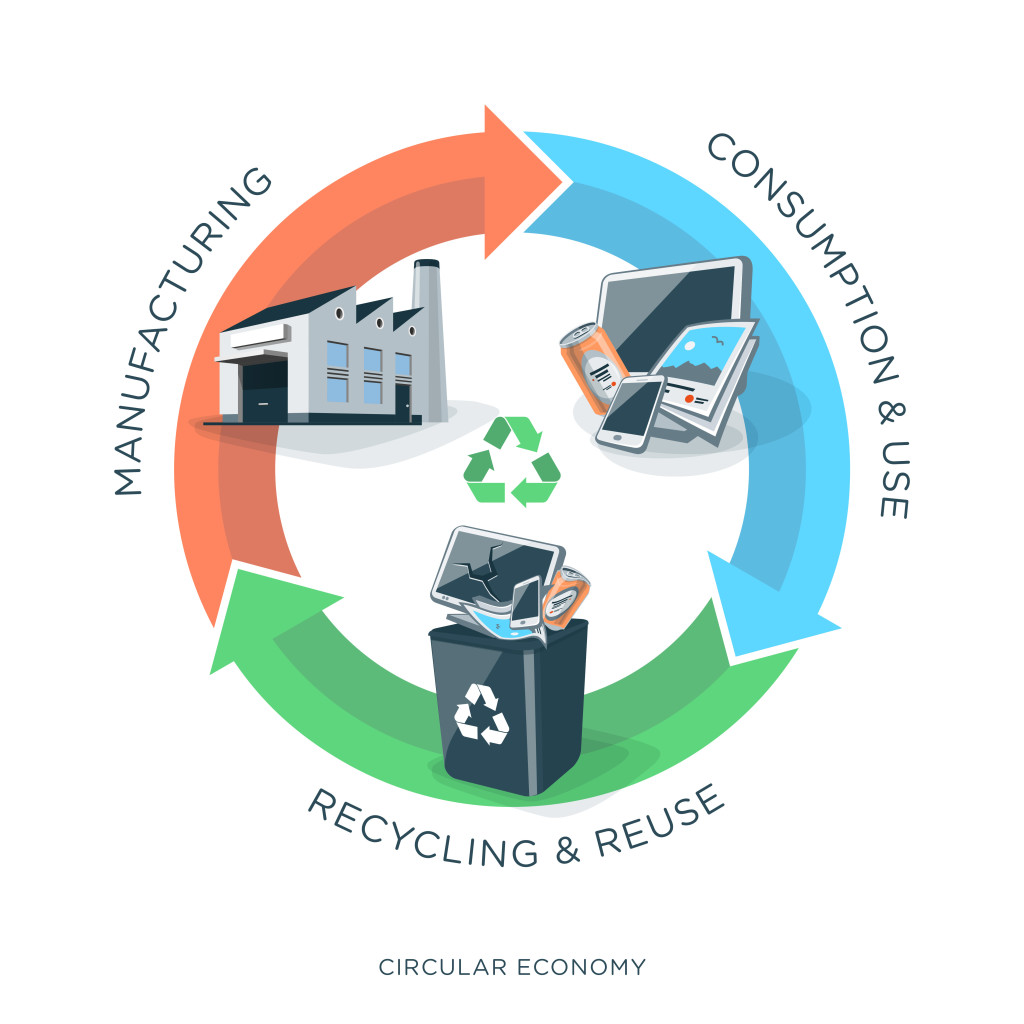
Bromine & the Circular Economy
The bromine industry is committed to working closely with authorities, its value chains and other stakeholders to encourage further sustainable end of life solutions across the different applications of bromine. Some solutions are easily or more readily available and achievable. Others will take time and require both innovation as well as pragmatism in terms of what is realistically feasible.
According to the Ellen McArthur Foundation, the “circular economy” concept can be encapsulated by the following:
Looking beyond the current ``take, make and dispose” extractive industrial model, the circular economy is restorative and regenerative by design
Relying on system-wide innovation, it aims to redefine products and services to design waste out, while minimising negative impacts
Underpinned by a transition to renewable energy sources, the circular model builds economic, natural and social capital
In December 2015, the European Commission adopted an Action Plan and legislative package to support the transition of the EU toward a circular economy, including long-term targets to reduce landfilling, increase recycling and reuse. The Action Plan is intended to support the circular economy at each step of the life cycle.
A recent 2019 report from the Commission indicates that most its planned actions are now implemented or underway. However, the reality on the ground is still challenging across many product and economic sectors. It is becoming clear that achieving more circular economic patterns will entail much more fundamental and innovative approaches to the way humans live, work and play.
Chemicals and the Circular Economy
Practically everything humans need for biological, social and economic function is composed of or relies on chemicals.
Chemicals can be in their elemental form or more generally used as salts, (inorganic and organic), solvents, oils or processed into complex materials such as alloys and polymers to which additives are often used to provide colour, finish, stability, flame retardancy and other functions. These materials in turn are used to make the products we use today to build complex infrastructure, homes, cars, electronics, consumer goods and packaging. Some of these products are long lived others have much shorter – single use lives. In principle, subject to the laws of thermodynamics and economics, it is possible to recover and recycle the majority of the products and materials we produce. We can even recover the basic chemicals depending on the particular product or material.
However, some products and materials contain chemicals which have been classified as hazardous and restricted under for instance the EU REACH Regulation or UN Stockholm Convention on Persistent Organic Pollutants (POPs).
The chemical in question may not have had this classification when it was first incorporated into a product. But at the end of its life, it now presents a problem for recyclers and for material and product manufacturers wishing to use recycled chemicals in their raw materials in order to save costs and reduce energy and CO2 emissions.
Cefic, The European Chemistry Industry Council, position on Circular Economy states that the European chemical industry supports the transition towards a circular economy as part of a strategy to make Europe more resource efficient. This can be achieved both by avoiding unnecessary material and energy losses throughout the life-cycle of products and maximising value by keeping resources circulating in loops, after first usage, many more times than today. Environmental reasons and business arguments suggest doing so.
For example, the infographic below shows the full potential of the innovations the chemical industry can bring in a circular economy for plastics:
Bromine and the Circular Economy
When considering “circularity” with respect to bromine, it is perhaps useful to approach it from how it is used. For example, with respect to energy storage, bromine is used as the electrolyte in a flow battery in a relatively simple chemical form (ZnBr2, Hbr, etc.) which, when the battery is at the end of life (+/- 15 to 20 years) or when the battery electrolyte needs to be replaced, can be removed and completely recovered as bromine in a bromine recovery unit to be available again for use.
Bromine-based energy storage systems and the Circular Economy
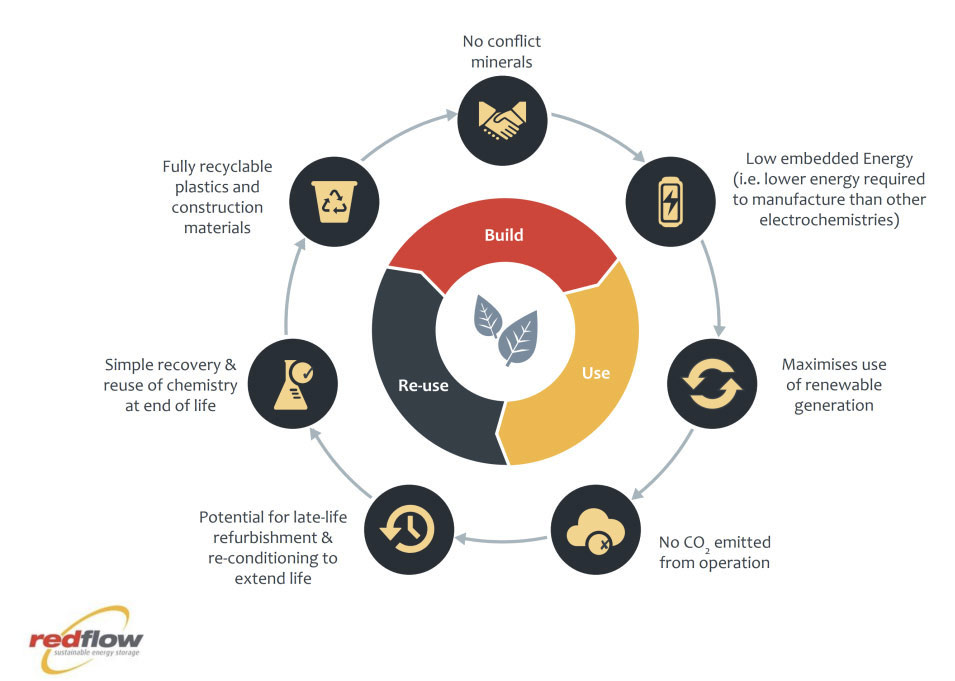
Things are different when bromine is part of an organic molecule such as brominated flame retardant. The brominated flame retardant is more than likely bound (additively or reactively) to a polymer or resin matrix (some form of plastic). Stripping out the bromine and recycling it is both challenging and very costly. The general way that it is used again is via recycling of the parent polymer with that polymer again used in the manufacture of new products or components which are placed in products from insulation to electronics to vehicles.
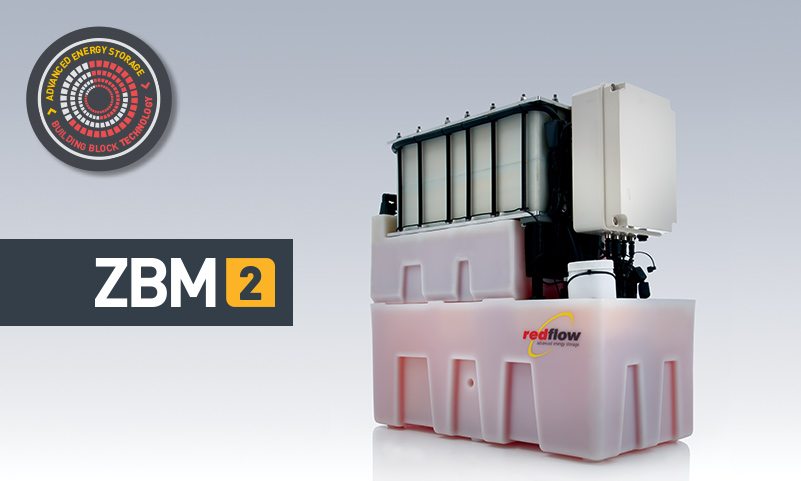
In a Netherlands first, a Dutch dairy farm has deployed six Redflow ZBM2 zinc-bromine flow batteries to store self-produced solar energy that can support its milk production with sun-harvested energy. Dubbed the Photon Farmer, the project aims to store solar energy for the farm’s use with six 10 kilowatt hour (kWh) ZBM2 batteries, the first Redflow deployment in the Netherlands.
End of life products containing brominated flame retardants
Plastics products containing brominated flame retardants can undergo several waste management options at the end of their life. The choice depends on the amount and composition of the plastics waste stream as well as on local conditions. Plastics with brominated flame retardants have excellent stability during recycling which allows recycled plastics to meet the same levels of fire safety as virgin material. This maintains the value provided by flame retardants in the recycled plastic. Challenges do exist with regard to some waste streams due to the heterogeneous nature of the plastics streams. They need to be sorted to ensure that optimal recycling can take place
Addressing end of life products containing phased-out restricted brominated flame retardants
Four brominated flame retardant chemicals used in the upholstery, polystyrene insulation, electrical and electronic equipment and in the automotive sector are now restricted under the EU REACH Regulation and the UN POPs convention. Whilst production of these substances by BSEF member companies has ceased, the recycling of the existing products and materials containing them presents a challenge. In the EU, recycling of end of life materials containing these substances is strictly regulated through end of life (waste) legislation on the one hand and also strict product content limits to avoid or limit exposure. The EU recycling industry use best available technologies to achieve effective recycling of end of life products containing brominated flame retardants while at the same time ensuring that material containing phased-out BFRs are separated and destroyed via incineration.
NOVEL “circular economy” technologies for addressing phased-out brominated flame retardants in end of life products
The bromine industry along with its value chain is also innovating the way it addresses such phased-out chemicals. One example of this is the Polystyrene Loop Project designed to provide a large scale demonstration plant using the CreaSolv dissolution process (chemical recycling). The PolyStyreneLoop concept uses the CreaSolv® Technology; allowing for the recycling of construction PS foam and waste and destruction of HBCD, while recovering the bromine in line with the POP regulations from the Basel Convention. The aim is to:
Achieve the recycling of HBCDD (a banned BFR) in PS foam waste derived from end of life buildings into new manufacturing grade polystyrene
Relying on system-wide innovation, it aims to redefine products and services to design waste out, while minimising negative impacts
Underpinned by a transition to renewable energy sources, the circular model builds economic, natural and social capital
Further information on the Polystyrene Loop project can be found here



